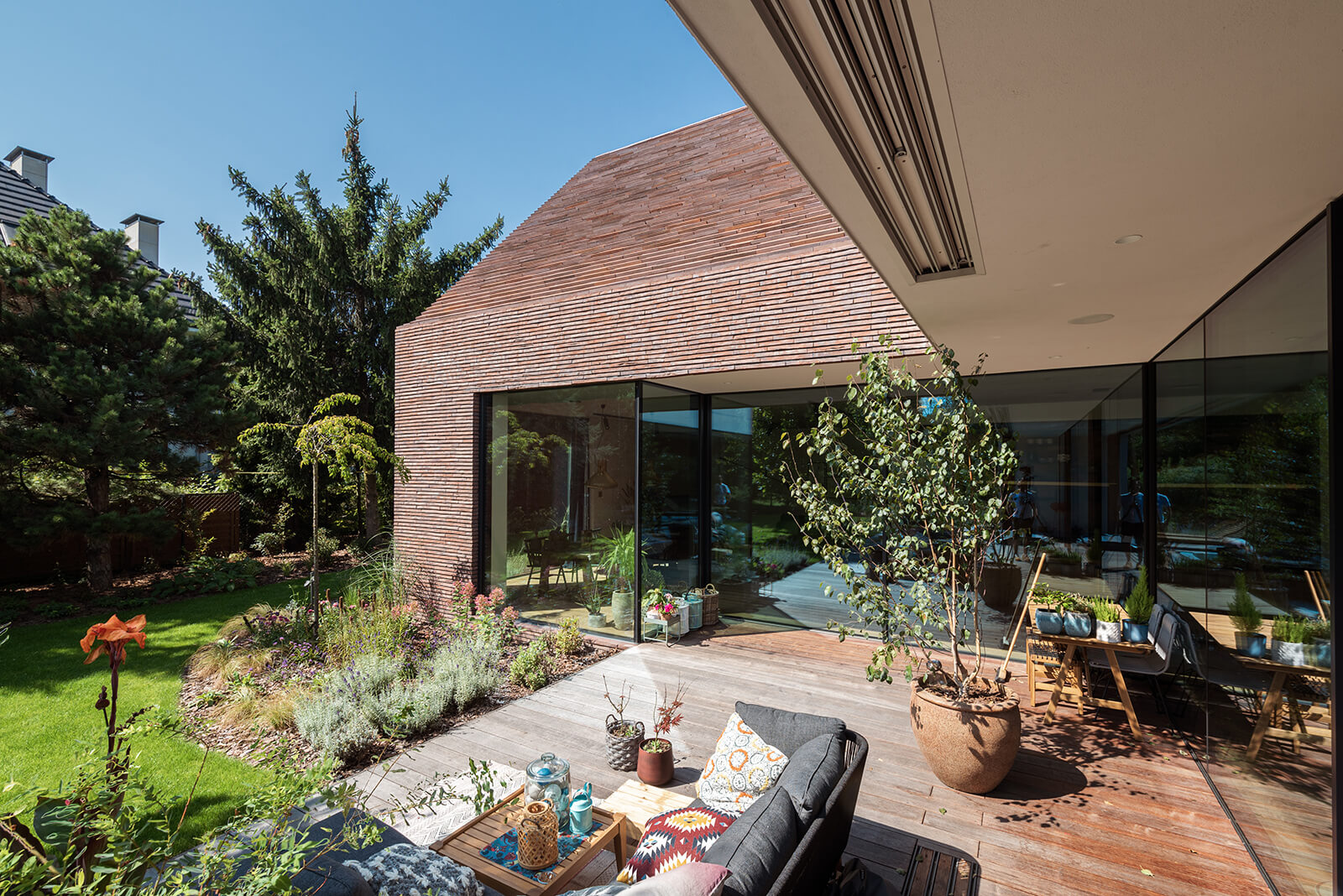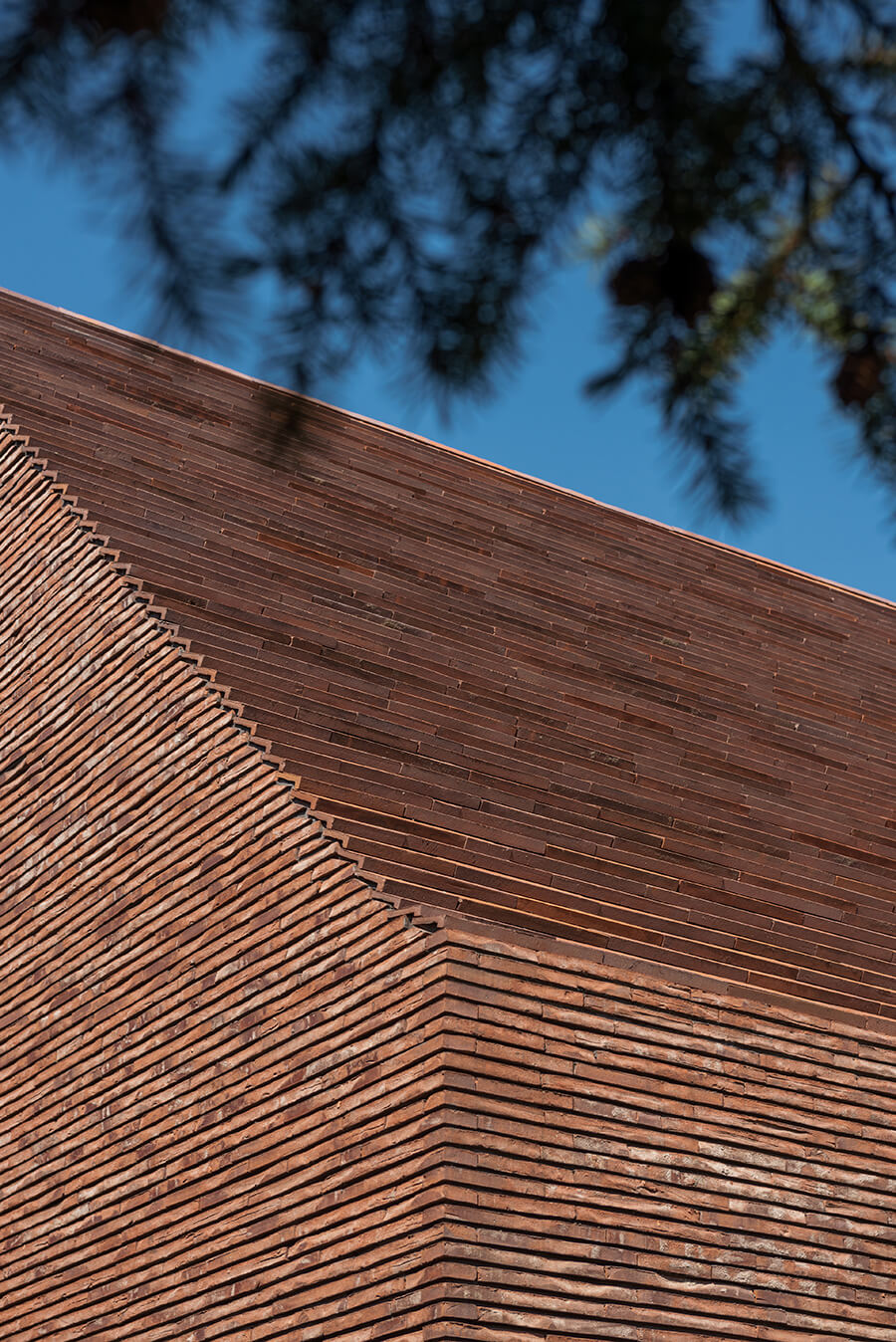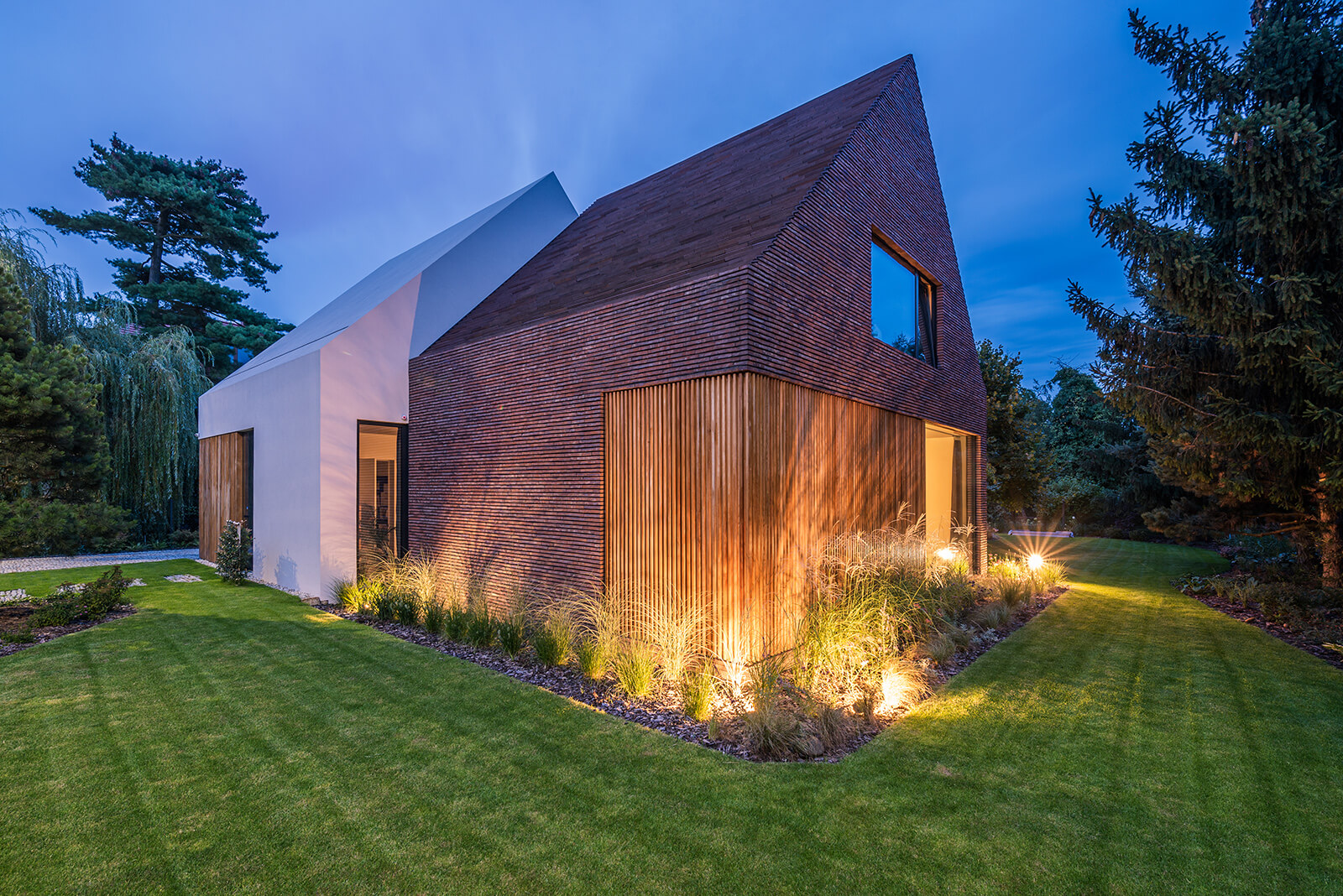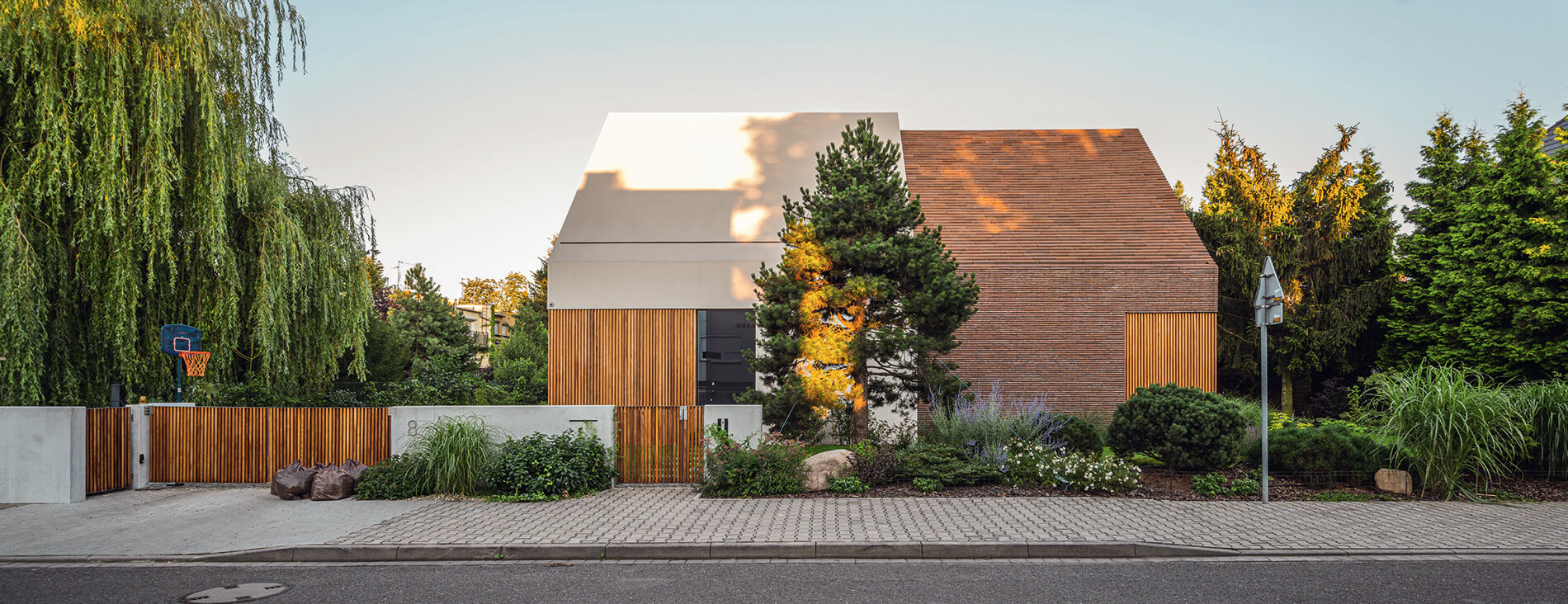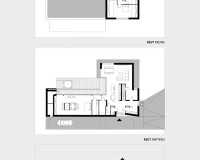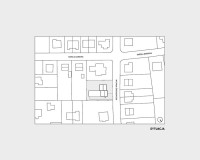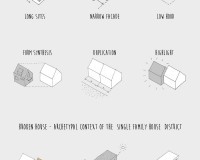Broken House / S3NS ARCHITEKTURA – IGOR KAZMIERCZAK
Broken House / S3NS ARCHITEKTURA – IGOR KAZMIERCZAK
Description
The house was designed in the borough of Oporów in Wrocław, in the historic area of the single-family houses. This residential district forms a special substance for Wrocław, because of its unique and characteristic house arrangement created by small buildings, sloped roof ridges and narrow house fronts. The form & style of the existing small historic house which was built on the subject building plot become an inspiration and synthesis for the outline of the current house.
The building conditions imposed by the local authority (Municipal Conservator of Monuments) assumed restrictions on the width of the facade, the height of the eaves and the ridge, and their arrangement in relation to the road. The investors' assumption was to create a contemporary house whose utility program significantly exceeded the usable area of the former buildings. The design challenge was to create a house that does not overwhelm the scale of surrounding buildings and takes into account all the housing needs of new residents. To fit in with the assumptions made, it was decided to exclude the garage from the utility program, which allowed it to shape the function and form more freely, with particular attention to scale.
The garage has been replaced with a roofed driveway integrated with the building, with capacity of at least three large cars. A contemporary house was designed with an attempt to reconstruct the archetypal form and scale of the building, while maintaining all urban features of urban development creating their spatial synthesis.
The outline of the Broken House results from an attempt to show the original proportions of the previous building, hence the break in the facade, which on the one hand highlights the old scale, and on the other reflects the layout of the internal function divided into private and day parts.
To emphasize the original form, two materials “rough” Brick Petersen and “smooth” plaster contrasting with each other in color and texture were used, which were used consistently on two shifted bodies.
Why brick?
Brick is a material that has always been here, and the traces of which are always found when we discover the history of a place. Ceramics as an architectural material is a bridge between the past and the present. Brick designates warmth, durability, nobility and class. That's why we still use it.




